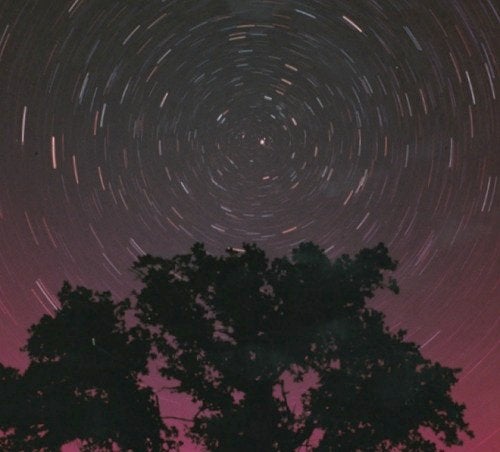For generations, Polaris unfailingly has guided navigators of both sea and sky toward true north. Modern astronomers also have come to know it as a type of stellar yardstick that measures cosmic distances. But while the North Star remains a celestial beacon for backyard stargazers, its distance and nature may now have to be revised. A recent study places Polaris among a rag-tag group of loosely bound stars — and nearly 33 percent closer than any previous estimate.
David Turner, a professor of astrophysics at Saint Mary’s University in Halifax, Nova Scotia, presented a sneak peek of his Polaris-puzzle at the annual meeting of the Canadian Astronomical Society in Winnipeg, Manitoba, last week.
For a year, Turner collected brightness data on Polaris using the 16-inch telescope at the university’s Burke-Gaffney Observatory. He was able to track in detail the four-day cycle of variations in the star’s feeble light. Astronomers class the Polestar as the nearest and brightest member of the elite Cepheid variables, which play a key role in our understanding of cosmic distance. Stars like Polaris rhythmically swell and shrink, fading and brightening as they do. But measurements taken throughout the past century indicate that the brightness of Polaris varies much less than that of other Cepheids. In just the past 50 years, the range of its brightness change has nose-dived from 10 percent to 2 percent. Moreover, while the pulse of Polaris appears to be weaker, its beat is rising at a rate of 8 seconds per year.
“It’s like having an old style wind-up watch that runs slower and slower until you wind it up again,” explains Turner. “In the case of Polaris, its pulsations are slowing down, the time between the peaks in brightness are getting longer and longer.” Although 8 seconds may seem small, it’s 100 times larger than changes found in other Cepheids with similar pulsation periods. Turner believes the Polestar’s rapid changes are best explained by stellar evolution.
Astronomers know that Polaris is within a transition state in its evolution, one that takes only a few hundred thousand years to complete. It’s maturing from a hot, blue, main-sequence star to a much cooler, red supergiant. These characteristics place Cepheids on a part of the Hertzsprung-Russell diagram called the “instability strip.” Although Cepheids pass through the strip many times, they do so quickly, spending less than 1 percent of their lifespan there.
Astronomers would like to scrutinize stars entering the instability strip for the first time, says Turner, but they pass through this stage so quickly only a handful of such stars have been identified. Polaris gives astronomers one more. “Out of a sample of 200 Cepheids across the entire Milky Way, only four Cepheids have been identified as first-time crossers, including Polaris.”
Another surprise: After sweeping through the position and distance information in the Hipparcos star catalog, Turner has found evidence for a sparsely populated star cluster associated with Polaris. Half a dozen or so outlying members surround another six or seven stars — including Polaris — arrayed in a tight, three-light-year-wide group. The numbers may grow, says Turner, as the search widens around Polaris.
Why has this cluster gone unnoticed until now? Its proximity to the North Celestial Pole presents certain challenges for any would-be observers, Turner points out. “Most telescopes have difficulty observing this part of the sky, so there hasn’t been an awful lot of information on Polaris and its surrounding region,” he says. Although direct measurements from the Hipparcos satellite place Polaris 431 light-years away, the star cluster appears much closer: 276 light-years.
Turner cautions that because Cepheids have been used as cosmological distance indicators for many years now, it is critical that we understand them. As for Polaris, its pulsations will eventually die away, leaving behind a stable star. When that will happen, no one knows for sure. Turner hopes to glimpse it during his lifetime, but says he won’t be holding his breath.
“It may be tomorrow or 10,000 years from now,” he says.










